
The Inca Trail to Machu Picchu is known as one of the most sacred pilgrimages in the world. Built within the dramatic landscape between the Peruvian Andes and the Amazon Basin in Peru, the Inca Trail leads cultural tourists, nature-lovers and history buffs alike to the historic city and profound Inca legacy of Machu Picchu, and on one of the world’s most beautiful historic hikes.
Quite possibly the most popular trekking route in the world, the Inca Trail has long been a bucket list staple and with good reason. The trail winds through the Sacred Valley, which provides a staggering backdrop of grass-covered cliffs that tumble down from snow-capped peaks, and winds up at the world-renowned archaeological site of Machu Picchu. Read our guide to hiking the Inca Trail below to learn what you need to know before booking your big adventure.
There are several variations of Inca treks to Machu Picchu, but here we will focus on the two main Inca trails, the traditional trail that takes four days to complete, and an easier version that takes two days to reach one of the most impressive preserved cities in the world, Machu Picchu. The trails and the city itself are some of the finest examples of man’s relationship with the environment, and deserves its international acclaim. Let’s take a look at their differences here:
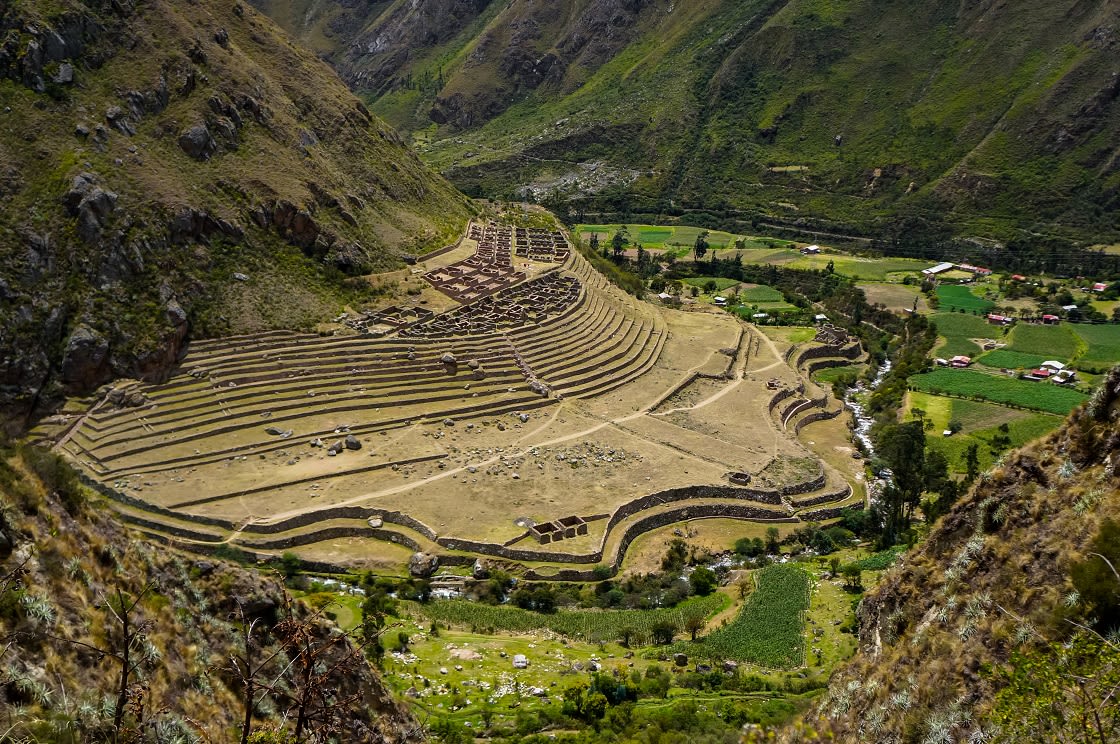
The Ruins Of Llactapata
Taking a four-day trek through the Urubamba Valley to Machu Picchu is the ultimate way to experience the Inca trail. Known as the “Classic Inca Trail,” treks usually start from the town of Urubamba or from Ollantaytambo in the Sacred Valley, or at km 88. The 43-km trail has incredible views of the Valley and of Llactapata, also known as Patallaqta, an area of extensive Incan ruins that were used for religious and ceremonial functions, as well as for crop production and housing soldiers.
The trail ascends along the Kusichaka River and takes in the small village of Wayllapampa, which is home to around just 130 families. For the first night of the trail hikers will most likely camp down at Llulluchapampa at 4,215 m (the highest point on the trail).
The trek takes in not only other areas of Inca ruins, but also waterfalls, cloud forests, mountainous climbs and Inca tunnels, with the longest one overlooking two valleys. Campsites are organized and this four-day trail also includes a trip to Intipata, a recently uncovered site of agricultural terraces that would have harvested sweet potato, maize and potatoes.
See rare orchids, over 400 species of birds, and maybe even the indigenous spectacle bear. Learn about the significance of each of the sites and the whole region for the Incas, and even where pilgrims would have engaged in spiritual cleansing, before making the final leg down to Machu Picchu at sunrise on the fourth day.
There is a slightly longer version which intersects with this trail, known as Mollepata, which includes the highest mountain pass that reaches 4,200 meters above sea level and can cause altitude sickness.
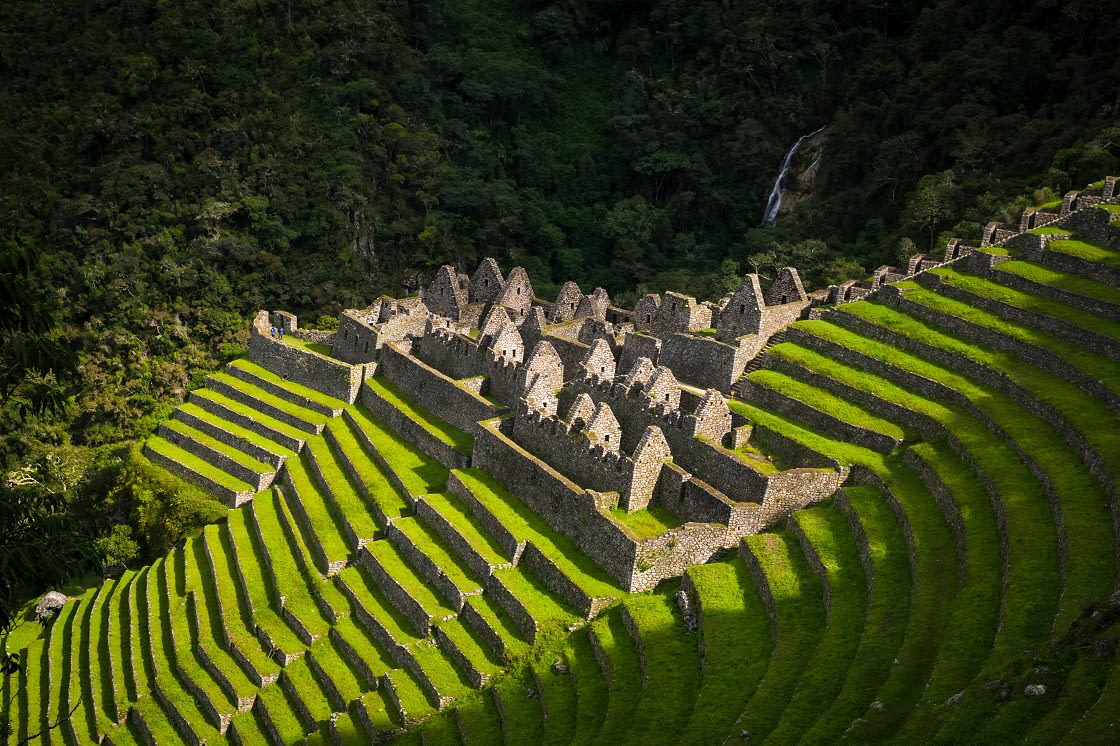
The Ruins Of Winawayna
The short Inca trail literally takes half the time of the classic trail, and is great for travelers who want to experience the beauty of the landscape of the region and some additional sites, but don’t have enough time to complete the four-day trek. The trail also requires a lower level of fitness and so often appeals to travelers who find hiking or trekking difficult. It is also less frightening if you are afraid of heights, as it only reaches a maximum altitude of 2,750 m above sea level.
Joining up with the four-day trail in Winaywayna, the two-day trail joins the classic trail just in time to see the most beautiful views of the trek, including stunning mountain scenery and Incan ruins. Most two-day treks begin just 14 km away from Machu Picchu at km 104.
On the first day you get to walk through Machu Picchu, but stay in Aguas Calientes, before waking up for a sunrise walk of the ancient city. After your walking tour, most tours usually have the option to climb Huayna Picchu, a massive 8,890 feet up and a 45 minute hike, if you want to. It may also be possible to shorten your trek to one day, which is great for very inexperienced walkers.
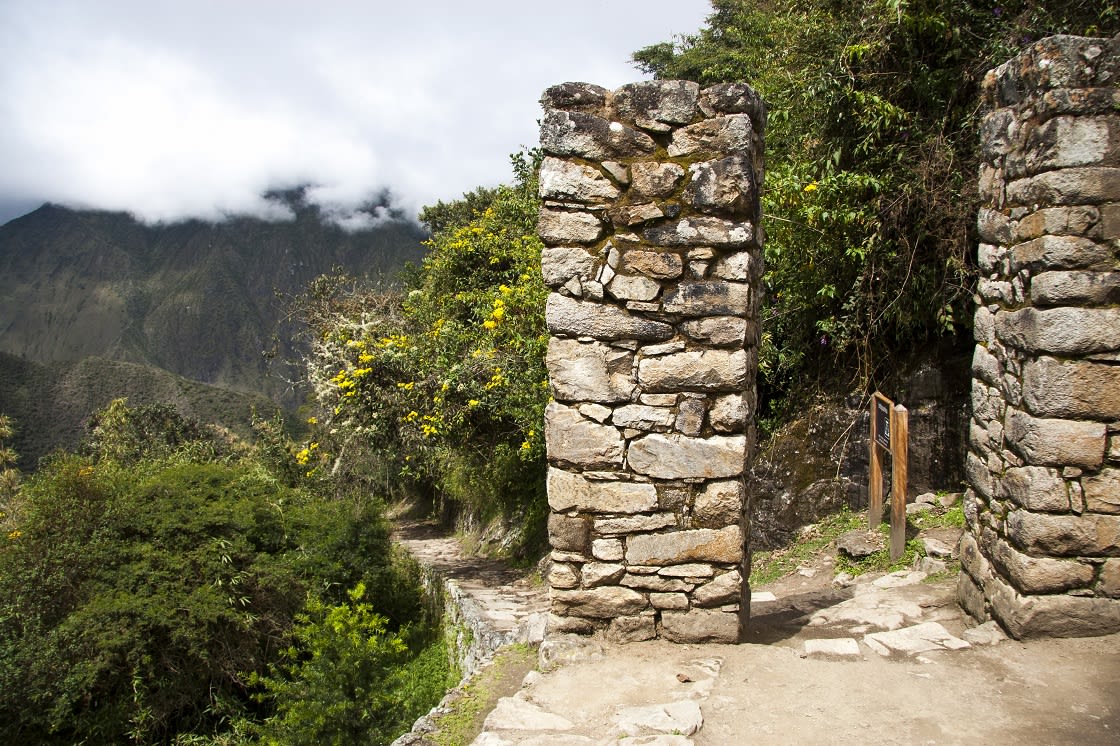
Inti Punku or Sun Gate, Machu Picchu
Be aware that the hikes are mostly uphill, and you should have a good level of fitness to complete the treks – especially the four-day trail – as well as wear the appropriate hiking gear. While the path is well-beaten and thousands of people complete the route every year, hiking the Inca Trail is no mean feat and if you want to make it all the way without too much hassle, you’re going to want to spend a bit of time preparing before you go.
Not only will you need a certain level of physical fitness but you will also need the emotional stamina required to get you through roughly 12 km of walking every day at a high altitude. Here are our 5 top tips (we’ve done it a few times) on how to prepare for hiking the Inca Trail.
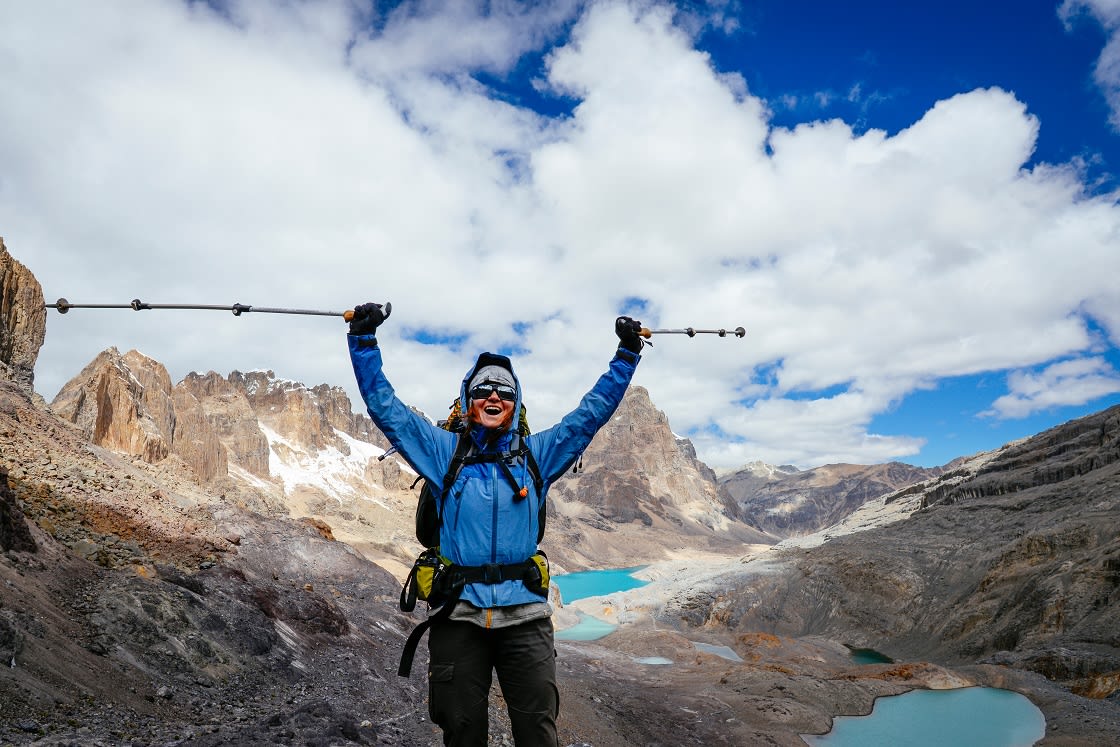
Happy Mountaineer on a High Pass
Hiking is demanding wherever you do it but it is especially difficult when you are 4,000 meters above sea level. If you have ever spent any time at altitude you will understand the challenge of breathing when there’s much less oxygen than you’re used to. When you get above around 3,000 m you can find yourself panting for air even when you’re sitting still. Now imagine how you’re going to feel on a strenuous hike – that’s why many hikers of the Inca Trail to Machu Picchu get Altitude Mountain Sickness (AMS).
To help prevent it, it helps being physically fit, but altitude sickness really affects each individual differently. Some folks don’t even notice a difference in altitude at all. We recommend not flying directly into high altitudes if it can be avoided, and spending a couple of days in Cusco and the Sacred Valley before your hike. That way your body will have some time to adjust to the altitude. Other tips include:
More information can be found in our Altitude Sickness Guide.
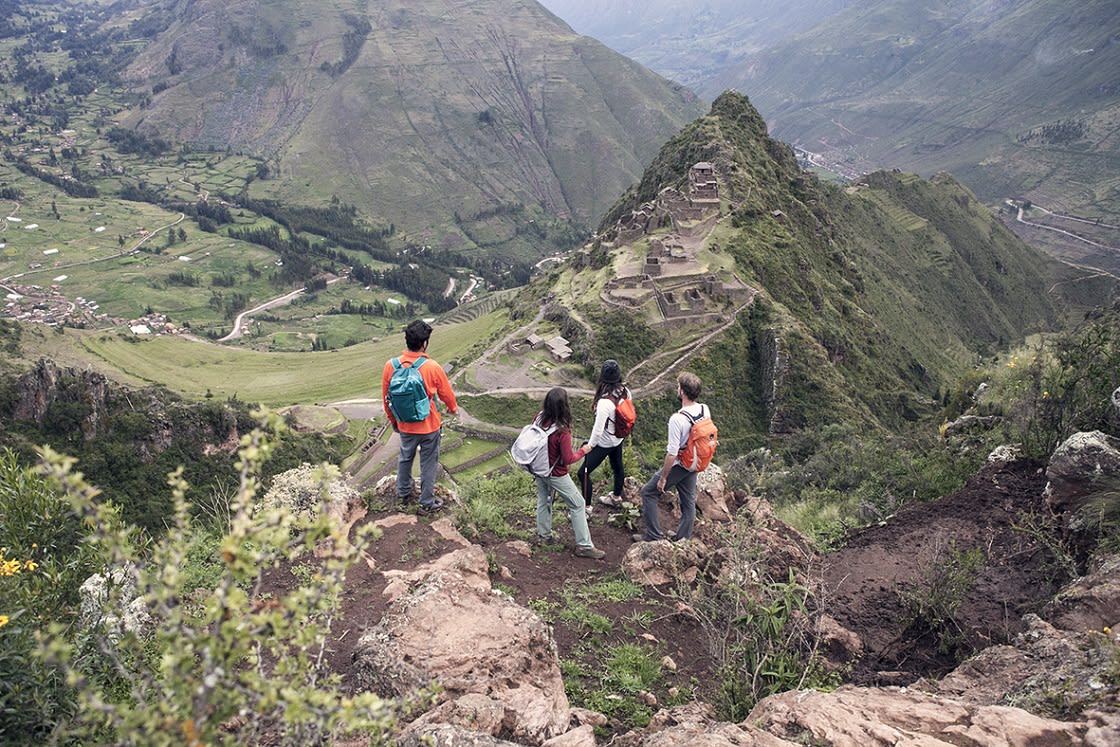
Group of friends trekking in The Sacred Valley
Of course, breathing is only half of the struggle when it comes to the Inca Trail. During your excursion, you will be walking around 12km per day, which can take anything from 3-6 hours depending on how many breaks you take, how difficult the terrain is and what kind of an incline you’re faced with. Needless to say, trekking 12km around your hometown is significantly easier than doing the same distance through the mountains of the Sacred Valley.
With this in mind, physical fitness is a must and you should start training several months before you intend to do the trail. A good training regime is one that focuses on cardio (running or swimming) with a light to medium intensity and a high duration– this means you do a mild workout but for a longer period of time.
One thing to remember, however, is that regardless of your fitness level, you shouldn’t push yourself too hard whilst hiking the Inca Trail. Firstly, you don’t want to burn out after day 1 and secondly over-exertion leads to altitude sickness and if this happens it’s game over for you my friend.
When you’re packing your backpack for your Inca Trail tour you should constantly be thinking about the fact that you have to carry it. This means that under no circumstances should you be packing anything that isn’t absolutely necessary. Even if you decide to hire a porter to carry your things, he will still have to carry it so don’t make it any harder for him than it already will be.
When it comes to clothes the most important things to take are items that can layer up. This region consists of a range of temperatures and climates, and the sun during the day will make the air feel very warm, while the evenings can bring rapid temperature drops as the sun disappears. When you start walking at 5 in the morning it is going to be freezing cold but as you start walking and the sun starts rising, you are going to heat up and sweat. Removing a layer or two every now and then is a great way to make sure your body is always at a comfortable temperature – just taking one big coat is only going to give you the too hot or too cold options.
Good hiking boots for the Inca Trail are also a must but, of course, you won’t be packing these, you’ll be wearing them from the get-go. Just be sure you wear them in before your hike. You don’t want blisters impeding your pleasure. Remember you’ll be carrying what you pack, so keep it as light as possible, but try to include the following essentials:
Unsurprisingly, there is more demand than supply for treks to Machu Picchu. The reason? Well, the demand side of things is fairly self-explanatory – hiking the Inca Trail is on many people’s bucket list, both young and old. The supply side is maybe less obvious. Since 2002, in order to preserve the fabled route from over-use and irreparable damage, the Peruvian government have restricted the number of Inca Trail permits (i.e. people that can hike the Inca Trail) to 500 per day, but only 200 of these are actually available to hikers, the other 300 being reserved for guides and porters.
Permits usually go on sale for the following year in October. Permits for March, April and May dates tend to sell out by the end of November, June and July dates by the end of December. August and September, the two busiest months on the Inca Trail, are often sold out come February. Also, be aware the Inca Trail is closed in February due to maintenance and heavy rains. In conclusion, make sure you have a permit and be sure to book early to avoid disappointment!
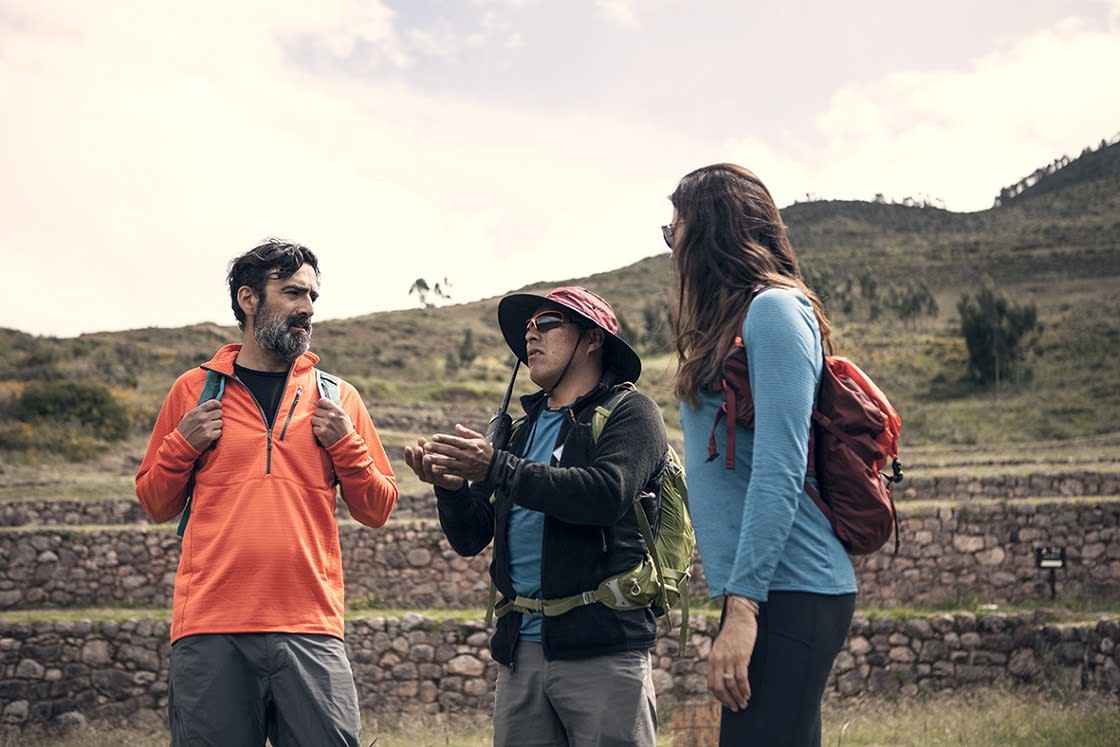
Tourists and their Guide
Since 2001 it has been a legal requirement that everyone who does the Inca Trail must have a tour guide with them and go as part of an organized tour. With Rainforest Cruises you can be sure your experience hiking the trail will be life-changing. The Inca Trail to Machu Picchu, a sacred journey over the mist-covered peaks of the Andes, is undoubtedly the most famous hike in South America, and perhaps the world. Leave it to the experts to help guide you through it, from the booking process and preparation, to the flight back home.
Before Machu Picchu was abandoned in the 16th century, the city was certainly not considered “off the beaten path”. Regular transportation, migration of the city’s servants and services ran to and from the city regularly, this is clear by the lack of large government storage at the site. Cusco would have been the main source of goods and services for the site, and the surrounding lands would have supplied the city’s agricultural needs.
The trail begins in the region known as “Quechua” at around 2,500 m above sea level. The Spanish invasion and excessive use of the trail did a lot to damage it and today we still do not know the true extent of the Incan network. Today only 25% of the network is visible, largely due to modern infrastructure, as well as the region’s bloody history. UNESCO and IUCN, however, are working to protect the site and the six countries it traverses.
Despite some knowledge of the city’s use and the Incas themselves, the area largely remains a mystery and the tales and myths have a great impact on many tourists that take the trail. Ask anyone and they will tell you that the best way to experience the magic and mystery of Machu Picchu and the Incan culture is to put on your walking shoes and get hiking.
Machu Picchu is one of the most visited sites in Peru, and the hike to get there helps you to get in touch with the spiritual road of the Incas and trace their strong archaeological legacy. Built in the 15th century, the old abandoned city lies high up in Andean mountains, and is known for its dry-stone walls that were built without the use of mortar. One of the most impressive urban creations by the Incan Empire, the historic site is set within a completely natural environment, with peaks, valleys and mountainous slopes filling the landscape that surrounds city.
A listed World Heritage Site, Machu Picchu is 2,340m above sea level and its trails encompass both the mountainous terrains of the Andes and the tropical jungles and forests of the Amazon. On the trail you will experience the diverse and rich flora and fauna of the Amazon region, as well as the impressive numbers of species of animals that are endemic to this area.
There are no two ways about it, hiking the Inca Trail is tough but now you know how to prepare yourself accordingly you should be confident that you will be primed for the trek. We have one final piece of advice for all you potential hikers – attitude is everything. You are going to ache, you will be tired and things aren’t always going to go as planned but you need the mental strength to push through it all and keep going no matter what. Let the unbeatable view of Machu Picchu and chance to explore the ruins keep you going through it all and, most importantly, enjoy yourself.
While Rainforest Cruises aim to provide accurate and up-to-date information, we make no representations as to the accuracy or completeness of any information herein or found by following any link on this site. Rainforest Cruises cannot and will not accept responsibility for any omissions or inaccuracies, or for any consequences arising therefrom, including any losses, injuries, or damages resulting from the display or use of this information.




